1 of 51
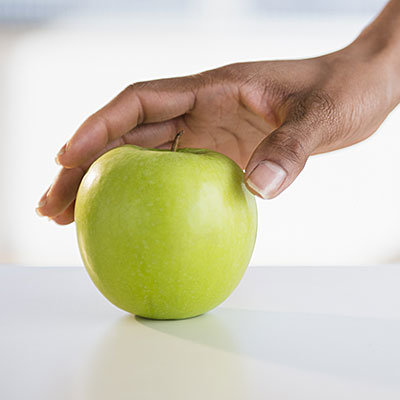
Keep a healthy snack on hand
Fast food or something from a vending machine may call your name when hunger strikes on the go. But if you keep a healthy snack like an apple or granola bar in your bag or glove compartment, you won't have to sacrifice your diet to silence a grumbling stomach. Even if you pass an ice cream shop when your hunger pangs strike, you should be safe: a study published in the journal Appetite found when people are craving something unhealthy, they'll still snack on whatever food is most accessible.
2 of 51
3 of 51

Keep a journal
Would you still eat that chocolate muffin if you had to log it in a food diary? Research says maybe not. A Kaiser Permanente study found people who kept a daily food journal lost twice as much weight over the course of six months than those who didn't record their meals. Another study published in the Journal of the Academy of Nutrition and Dietetics found that women who kept food journals lost, on average, six pounds more than women who were simply part of diet and exercise groups. Researchers believe writing down what you eat makes you more aware of food choices, and therefore encourages cutting the calories you'd otherwise sneak in.
3 of 51
4 of 51

Just keep chewing
Your Doublemint habit may help you keep off the pounds. One study discovered that women who chewed gum for 45 minutes after they ate lunch ended up keeping snack cravings at bay later in the day. Bonus: Sugar-free gum helps clean teeth by stimulating saliva production.
4 of 51
5 of 51

Put a mirror in your dining room
Researchers at Cornell University's Food and Brand Lab found that eating unhealthy food in front of a mirror can make it taste less delicious. Watching yourself eat junk food triggers discomfort, since you're suddenly very aware of the unhealthy choice. So if you're seeking an easy way to boost your weight-loss goals, consider picking up a new decorative mirror for your dining room or kitchen. It could help you (quite literally) watch what you eat.
5 of 51
6 of 51
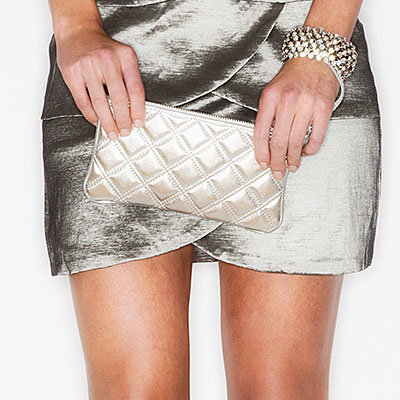
Pick your handbag wisely
Carry a clutch whenever you attend a party where there's food (in other words, every party). Since you'll only have one free hand, it'll be harder to mindlessly snag unhealthy bites, explained Jessica Dogert, RD, dietitian at Fitness Formula Clubs Lincoln Park in Chicago, in a previous interview with Health. To really keep yourself from reaching for a treat, hold a drink in your other hand (something that's not loaded with sugar, like seltzer). Of course, this doesn't mean you need to totally deprive yourself at a shindig, but keeping your hands full will force you to make more deliberate, mindful food choices.
6 of 51
7 of 51

Curb hunger with coffee
You may think you're just drinking your daily cup of joe for a morning pick-me-up, but in reality, it's doing more than just giving you a caffeine boost. Drinking coffee can actually boost your calorie burn by 12%, according to findings in the American Journal of Clinical Nutrition. Plus, it's a natural appetite suppressant. But be wary of adding sugar and cream, since too many extras will kill your coffee perks.
7 of 51
8 of 51

Count your bites
Counting calories can help you slim down, but it can also be time-consuming (and to some, frustrating) to jot down every bite. Try counting your bites instead, which a recent study found actually works. Study participants lost an average of 3.4 pounds over the course of a month by reducing their daily bites by 20 to 30%. Even just tracking how many times you bring your hand to your mouth to take a bite will help you be more mindful of how much you're eating, which may help you drop pounds.
8 of 51
9 of 51
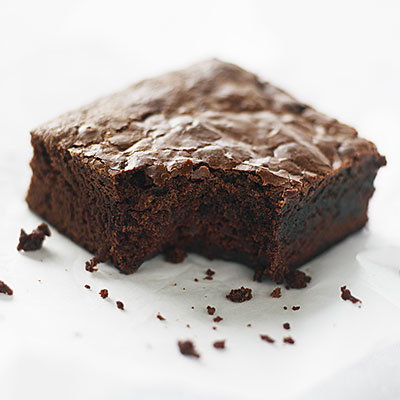
Three's the charm
Whether it's a gooey brownie a plate of cheesy nachos, go ahead and indulge—but limit yourself to three bites, advised Lauren Harris-Pincus, RDN, New Jersey–based registered dietitian, in an earlier interview with Health. "Slowly savor those three bites and you should be satisfied." While showing enough restraint to only take three bites may seem insane, there is a method to her madness. Harris-Pincus explained the first bite will most likely live up to your expectations, but the second won't be as good as the first. By the time you get to the third bite, remind yourself it's not going to get any tastier, so you might as well quit while you're ahead.
9 of 51
10 of 51
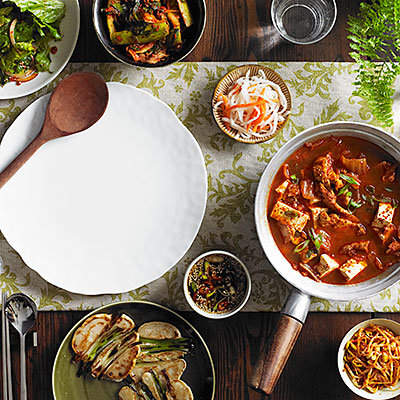
Serve yourself directly from the pot
Rather than leaving serving dishes at the table where you can easily dip in for seconds (and even thirds), leave them in the kitchen—otherwise overeating is simply too convenient to resist. If you have to physically get up and walk to the kitchen for another helping, you're less likely to do so. In fact, one study suggests you could end up eating approximately 20% less with this subtle trick.
10 of 51
11 of 51
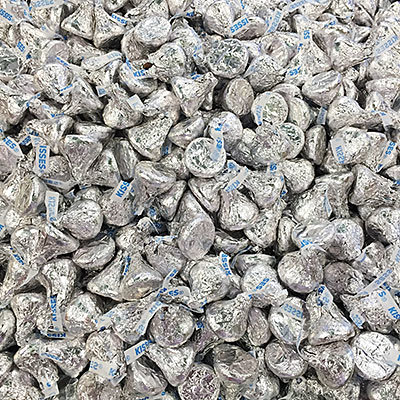
Create obstacles
Not only should you make sure overindulging isn't convenient, you should also create actual barriers between you and your food. One study from Switzerland found even the most minor obstacles could help you eat less. Participants were told they could eat all the chocolate they wanted. When the chocolate was unwrapped, they ate an average of 5.3 pieces. But when each piece of candy was wrapped individually, participants averaged just 3.6 pieces. The simple act of unwrapping a piece of chocolate can be enough to keep you from eating more than you truly want—one of the few times being lazy actually works to your weight-loss advantage. So go for other challenges—snack on foods that take more effort to eat (like shelled nuts, edamame, or fruit with a peel).
11 of 51
12 of 51
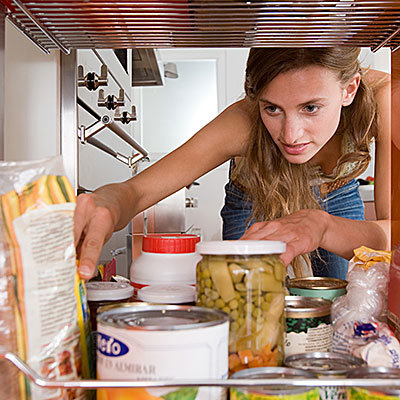
Hide your unhealthy munchies
A Cornell Food and Brand Lab study found that women who stored soft drinks on the counter weighed 24 to 26 pounds more than women whose counters were free of sugary beverages. Similarly, women who displayed cereal boxes on the counter were, on average, 20 pounds heavier than those who didn't. So rather than leave your snacks out in the open, make it more challenging to eat by keeping hiding them away on the highest shelf of your pantry.
12 of 51
13 of 51
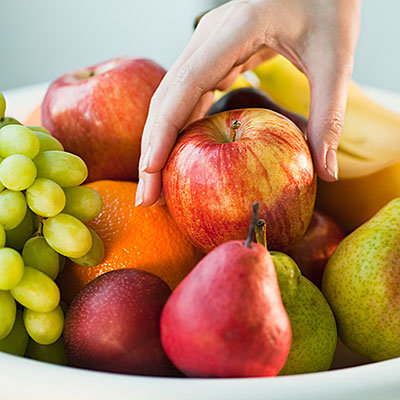
Stock your fruit bowl
Unlike junk food, you should proudly display your healthy snacks. The same Cornell University Food and Brand Lab study found people who kept a fruit bowl in plain sight weighed an average of 13 pounds less than those who didn't. The takeaway: place a bowl on your kitchen counter and fill it with nutritious oranges, bananas, and apples.
13 of 51
14 of 51
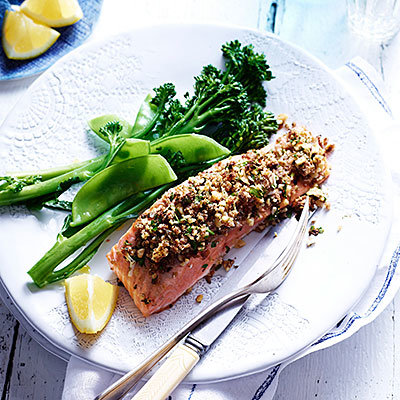
Start out with a smaller portion
If food is on your plate, you'll probably end up eating every last morsel, according to a Cornell Food and Brand Lab study. But these findings don't mean your diet goals are hopeless—in fact, this knowledge can help you outsmart your own appetite. The solution is simple: serve yourself less food. Then go back for more if you're still hungry.
14 of 51
15 of 51
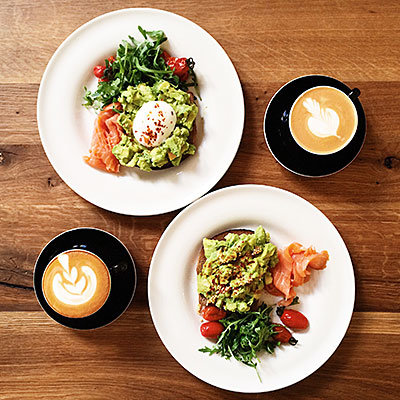
Swap out your dishware
Eating off smaller plates or plates that have a thick border could trick you into reducing the amount you eat by more than 20%, according to Cornell research. Having a smaller surface area prompts you to serve yourself less food and curb overeating.
15 of 51
16 of 51
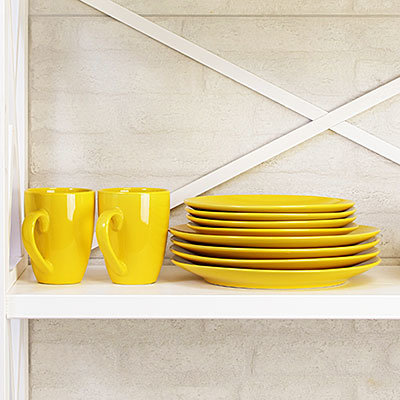
Do some re-organizing
To make sure you actually reach for those smaller plates, make them super-accessible by moving them to your cabinet's bottom shelf. Doing so will make you more likely to use them, and consequently more likely to drop those unwanted pounds.
16 of 51
17 of 51
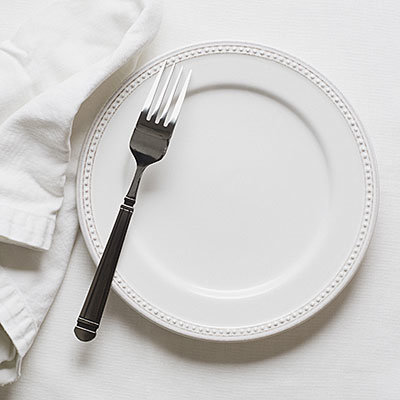
Create an optical illusion
Another way to confuse your noggin: choose plates that are close in color to your tablecloth or placemat, so they blend together. According to a study in Journal of Consumer Research, those who did so ended up serving themselves less. Researchers believe a monochromatic palette is a disorienting visual cue, making you more wary of piling your plate with food.
17 of 51
18 of 51
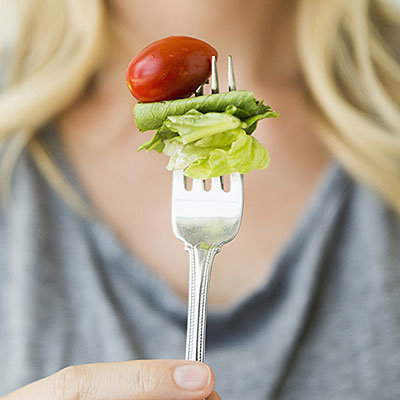
Supersize your fork
Plates aren't the only dinnerware you can use to your advantage; the size of your fork could also affect how much you eat. One study found that people who used larger forks ate about 10% less food than those who used small ones. Researchers believe that since the food is gone quicker, your brain is tricked into thinking your belly's filling up faster.
18 of 51
19 of 51
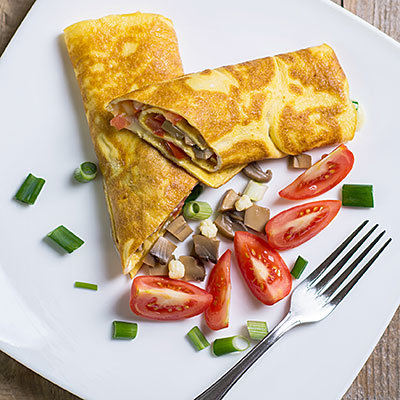
Eat a breakfast of champions
Filling up on a hearty morning meal makes you less prone to snacking and overindulging later in the day. One study found that women who ate a large breakfast (around 700 calories) had a greater drop in ghrelin (the hunger hormone) than women who ate a smaller breakfast. Plus, eating a tasty meal in the a.m. will keep you from feeling deprived the rest of the day.
19 of 51
20 of 51
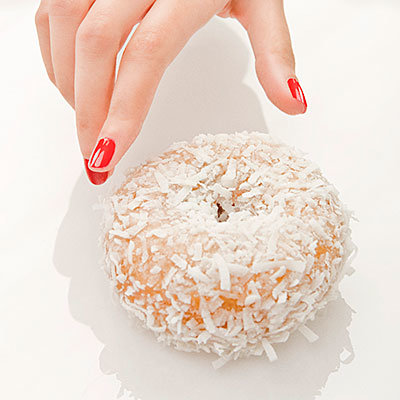
Eat dessert after breakfast
We're not talking about chowing down on a massive slice of chocolate cake every day, but treating yourself to a small sweet after a protein-packed breakfast could help curb your cravings (and keep you from sugar-bingeing) the rest of the day. Israeli researchers discovered women who ate a small sweet after breakfast lost 38 more pounds over the course of eight months than women who ate a more traditional morning meal.
20 of 51
21 of 51
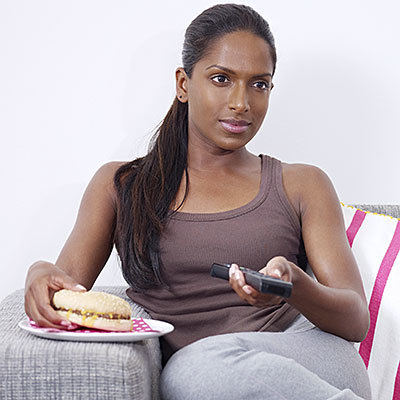
Skip the cooking shows
While you might be taking all the steps to set yourself up for weight loss success, your favorite cooking show could be sabotaging your best efforts. One study found looking at images of fatty foods could stimulate your brain's appetite center and make you feel hungry. So if you're trying to eat less, stick to sitcoms.
21 of 51
22 of 51

Eat before grocery shopping
We've all heard this advice many times before, but it's worth repeating: never grocery shop on an empty stomach. In fact, research from Cornell University found that skipping meals before going hitting the supermarket leads to unhealthy purchases. The participants who fasted beforehand bought 18.6% more food than those who ate before the trip. Plus, the same group bought 44.8% more unhealthy products like chips and ice cream. Lesson learned: grab a snack, like an easy energy bar before you hit the market.
22 of 51
23 of 51
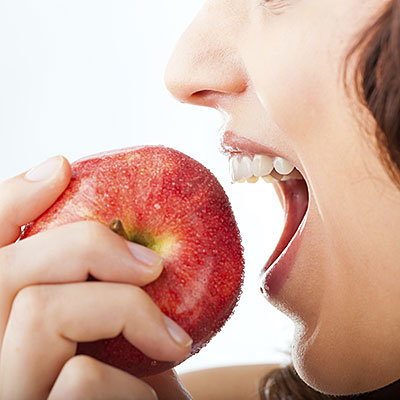
Choose your snack wisely
It's important to eat before heading to the grocery store—but what you choose to chow on is just as influential. One study showed that people who ate an apple before heading to the story bought 25% more produce than those who ate a cookie.
23 of 51
24 of 51

Slow down
Scarfing down your dinner doesn't give your brain enough time register that your belly is actually stuffed. Let your body realize you've feasted sufficiently by slowing the pace. And don't let your friends speed your meal. One study found that when two women eat together, one woman is likely to take a bite within five seconds of watching another woman do so. Help each other out by consciously slowing down. You'll end up eating less food and feeling more satisfied.
24 of 51
25 of 51
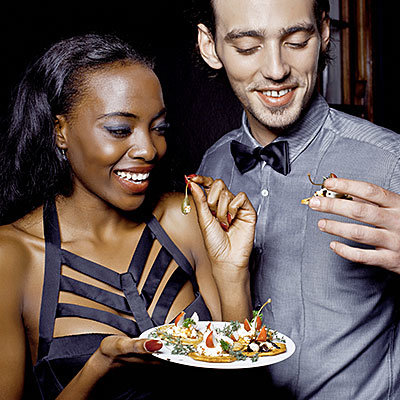
Never show up hungry to a party
Show up to a soirée on an empty stomach, and you'll wind up making a meal of whatever is available—and let's face it, party fare is not the healthiest (hello, pigs in a blanket). Plus, it's tough to track how muck you're actually eating when all the food is bite-sized. To avoid overdoing it with party snacks, make sure to eat a healthy, protein-packed meal ahead of time.
25 of 51
26 of 51

Go for H2O
One of the best ways to trick your body into feeling full costs you nothing: just turn on your tap and fill a cup. Drinking an entire glass of water before every meal fills your belly, so you'll likely end up eating less than you otherwise would have. During your meal, taking sips in between bites will help slow your pace and eat less overall. What's more, staying hydrated boosts your metabolism—making water better than any "diet" beverage out there.
26 of 51
27 of 51
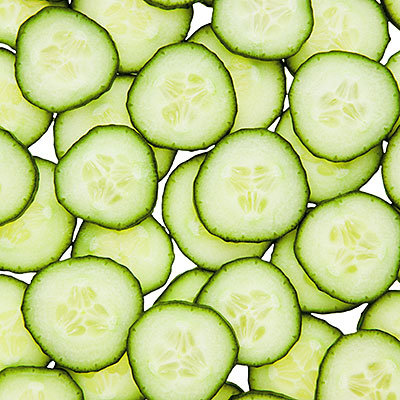
Eat your water
Downing water isn't the only way to stay hydrated and satisfied. Water-rich foods can also do the trick, Rima Kleiner, RD, a Greensboro, NC–based nutrition expert, told Health in a previous interview. "High-water foods also tend to be loaded with dietary fiber, vitamins, and minerals like potassium." So pile your plate high with foods like cucumbers, lettuce, and green peppers.
27 of 51
28 of 51

Request a tall glass
Bartenders pour 27% more alcohol into shorter, wider glasses than tall, skinny ones, even when they hold the same amount of liquid, according to research published in the Journal of Consumer Research. Ask for your cocktail to be served in a taller tumbler to save on calories. Another upside: it's not just bartenders who underestimate the size of a glass, so you won't feel deprived while you're drinking.
28 of 51
29 of 51

Sleep before you snack
When your body gets tired, it has one burning desire: carbs. But pre-bedtime snacks can do a number on your waistline. Intercept your cravings with one simple tactic: just go to sleep! Hitting the hay doesn't just stave off midnight snacking; one study showed that when people slept just four hours a night, the rate at which they processed calories from glucose fell by 40%. In other words, catching those z's could help you majorly slim-down (don't mind if we do!).
29 of 51
30 of 51
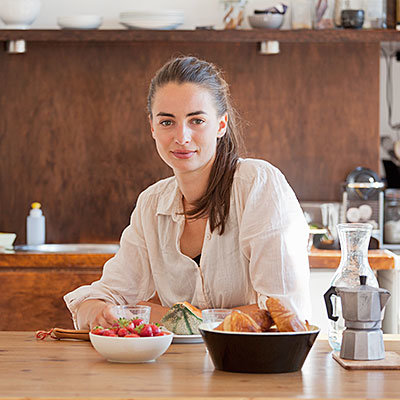
Make your eating zone Zen
It's time for a kitchen detox! Scan your kitchen for anything that might be killing good vibes—bills, to-do lists, mail. Why would this help your diet goals? According to a study in Psychological Reports, people eat about 18% less when they're in a relaxed environment. In other words: ditch the stressors, and the pounds will aptly follow.
30 of 51
31 of 51
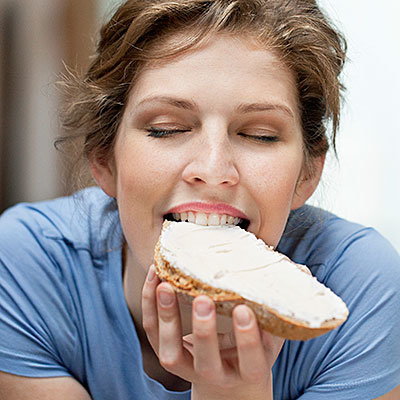
Stop fearing full-fat dairy
Why waste calories on a bland stick of fat-free cheese? Instead, truly satisfy your craving with a flavorful full-fat variety. A 2015 study published in the American Journal of Clinical Nutrition revealed not only that an increase in eating full-fat dairy led to neither weight gain nor weight loss, consuming more low-fat products was associated with increased carb consumption, which may promote weight gain. Looking for some delicious ways to incorporate full-fat dairy? Try Greek yogurt, it's creamy, tasty and packs a big dose of protein.
31 of 51
32 of 51
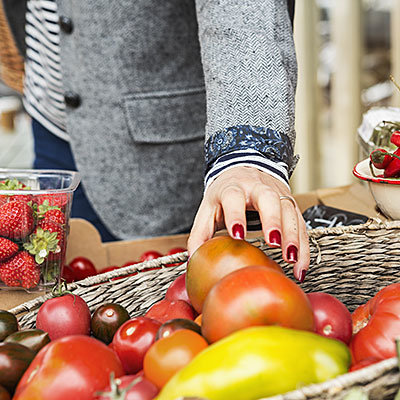
Shop weekly
Rather than buying in bulk, only shop for the groceries you'll need for the week. While this may seem inconvenient, consider this: studies have shown that stockpiling food means eating the supply twice as fast anyway. As Keri Gans, RDN, previously explained to Health: "Psychologically, you can feel pressure to eat when there's a lot of food in the house." So trick your brain in the opposite way: if you have just enough food to last until your next weekly shop, you're more likely to stick to controlled portions.
32 of 51
33 of 51
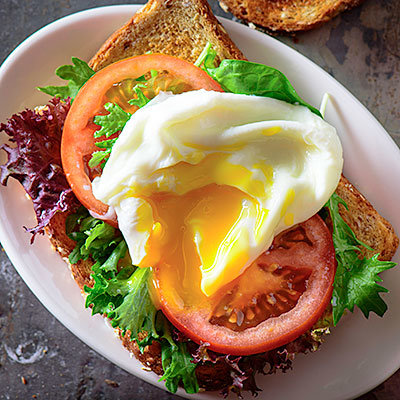
Switch up your sandwich
Sandwiches are a lunch staple, but if you change things up with your hoagie, you could save major calories. Try making an open-face sandwich, with only one slice of whole-wheat bread. It will cut 100 calories from your meal, but your brain will still feel like you ate a satisfying sandwich. To reduce even more cals and carbs, make a tasty lettuce wrap.
33 of 51
34 of 51

Focus on food
If you eat while reading e-mail, scrolling through Twitter, or watching HGTV, chances are you'll end up overeating. In a study published in the American Journal of Clinical Nutrition, people who played a computer game while eating lunch reported feeling less full, snacked more, and had more trouble remembering their meal than those who ate without any distractions. But if you step away from technology, you can truly savor your food and avoid mindless munching. Simply redirecting your focus will allow you to feel way more satisfied with even less food.
34 of 51
35 of 51

Play on your phone
Focusing on technology while you're eating can lead to diet failure, but gluing your gaze to your phone in between meals can actually curb your cravings. A study published in the journal Appetite found that playing video games (on your phone or otherwise) can reduce your food cravings and render them less extreme. So go ahead, indulge in some Candy Crush (just make sure you don't have a bowl of actual candy in arm's reach when you do).
35 of 51
36 of 51

Say "I don't"
When it comes to diet willpower, perspective is key. A study published in the Journal of Consumer Research found dieters who used a phrase like "I don't eat ice cream" instead of "I can't eat ice cream" were more likely to choose a healthier option or skip the snack altogether. Why? Saying "I don't" gives you more power, so your brain doesn't interpret the situation as deprivation, but rather a confident choice.
36 of 51
37 of 51
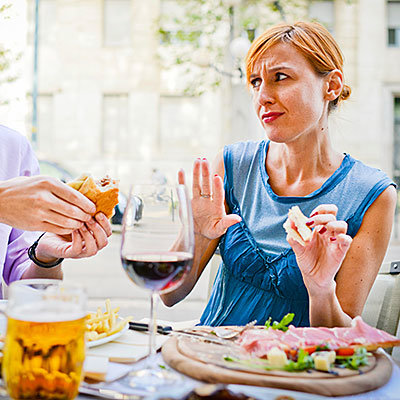
Give in (sometimes)
Another way to trick your body into feeling satisfied rather than deprived is to actually give in to your sweet tooth. Yes, you heard that right. In a previous interview with Health, fitness guru Jillian Michaels explained: "Depriving a sweet tooth is a recipe for disaster. Don't cut things out so you binge later. Instead, try allotting up to a fifth of your daily calorie allowance to the sweet of your choice." So go ahead, have that square of dark chocolate—it'll keep you from chowing down a pint of ice cream later.
37 of 51
38 of 51
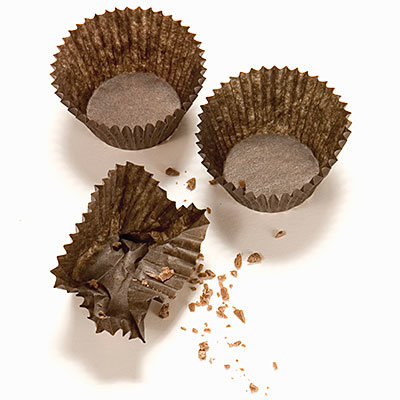
Don't let yourself off the hook
It can be easy to allow yourself “one little treat" which later turns into two, or even three if you're not careful. To combat this convenient amnesia, save all the wrappers from your sweet treats in a jar, advises Susan Albers, PsyD, author of 50 Ways to Soothe Yourself Without Food ($12; amazon.com). With a visual reminder of how many times you've splurged, you're more likely to think twice about caving to cravings again.
38 of 51
39 of 51
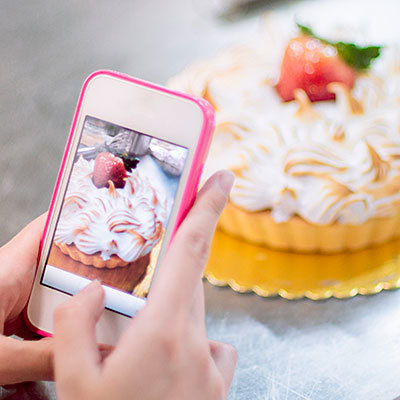
Un-follow all foodies
Who doesn't love browsing pictures of scrumptious food on Instagram? After all, you get to drool over decadent images without actually hurting your diet, right? Not quite. According to a recent study published in Brain and Cognition, scrolling through food porn can actually trigger a need to feast , even if you're not at all hungry. So do yourself a favor: un-follow those foodie accounts ASAP. Or at least stick to healthy food bloggers for some nutritious inspiration.
39 of 51
40 of 51
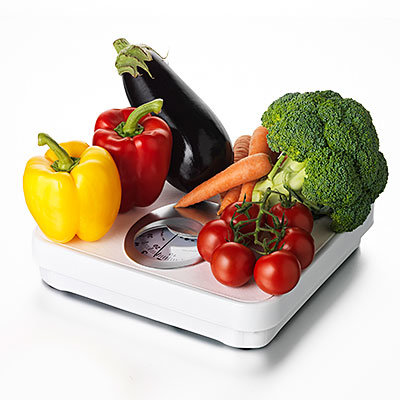
Remind yourself healthy food is filling
Nutritious fare often gets a bad rap for keeping your belly grumbling. A recent study published in the Journal of the Association for Consumer Research looked specifically at overconsumption of "healthy" foods. They found that since many consumers consider these foods "less filling," they end up eating larger quantities, leading to weight gain. Time to rewire your brain: remind yourself that healthy food is just as filling—if not more so—than fatty, sugary eats. Change your perspective and you'll be on the path to a healthy diet and weight in no time.
40 of 51
41 of 51
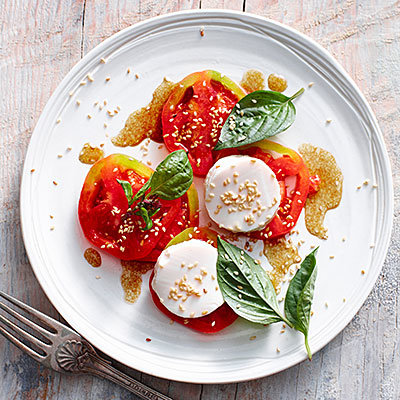
Get artsy
We eat with our eyes just as much as our stomachs—meaning it's important to put as much thought into the meal presentation as the food itself. But could beautiful plating actually lead to eating less? A University of Oxford study served one group an artistically arranged salad, another group a neatly lined-up plate of veggies, and a third group a disorganized pile of greens. The three salads contained identical ingredients, but the artistic one was rated the most delicious. The verdict: satisfy your belly as much as your eyes by upping your plating skills.
41 of 51
42 of 51

Do your research
Most restaurants post their menus online, so save yourself the stress of choosing a dish on the spot by picking out your order ahead of time. If you wait until you're sitting at your table to view the menu, then your grumbling belly and peer pressure from your friends may mean choosing the side of fries over the side of steamed broccoli.
42 of 51
43 of 51

Record your triumphs
Each time you successfully combat a craving, write it down on an index card or post-it note. "You need to do this 15 times in a row before you'll be able to conquer any craving," Judith Beck, PhD, director of the Beck Institute of Cognitive Therapy and Research, told Health in a previous interview. "On the reverse side of the card, write down some affirmations to remind yourself why you should resist." These positive reminders will keep your mind and body in check.
43 of 51
44 of 51
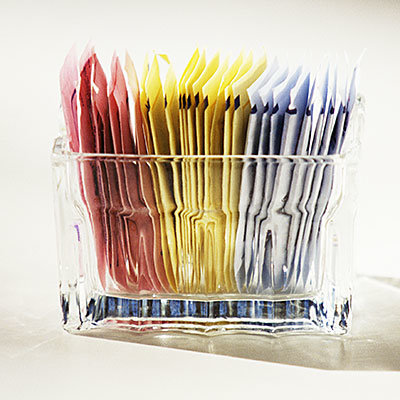
Ditch artificial sweeteners
Don't kid yourself—sipping diet drinks and "sugar-free" snacks won't help you lose weight. In fact, statistically, people who drink diet beverages are not slimmer than those who don't. Scientists say that fake sugars activate the brain's pleasure center without actually satisfying it, which triggers an increased desire for sweets.
44 of 51
45 of 51

Box up your restaurant meal
Here's a habit that can make you gain without even realizing it: eating at restaurants. One 2014 study found that people consume an additional 200 calories each day they eat at a restaurant compared to the days they cook at home. Other research shows that a single meal at a sit-down restaurant can clock in at a day's worth of calories. So try to save eating at restaurants for special occasions, and when you do go out for a meal, ask for your waiter to box up half of the portion before you even dig in. Not only will you instantly have leftovers for the next day (score!), you'll also remove any temptation to devour your high-calorie restaurant-sized portion.
45 of 51
46 of 51
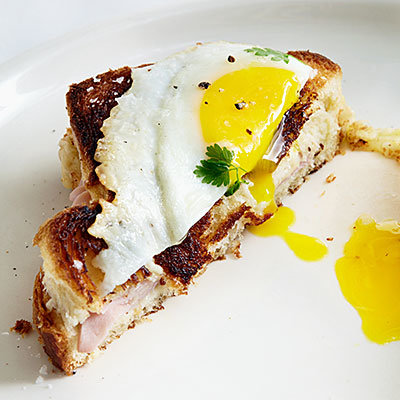
Go halfsies at a meal
If asking your waiter to box up half your meal before you even touch it is a little too awkward for you, then ask your dinner partner to split a meal with you instead. Restaurant portions are typically so huge to begin with that neither of you should feel hungry after the plate's clean.
46 of 51
47 of 51

Scope out hidden sugar
The average U.S. adult eats 22 teaspoons of added sugar per day. That's any sugar added to foods by you—think stirring sugar into your coffee—or by food manufacturers. It's the second category that can make dropping pounds such a challenge. Sugar is added not just to sweet-tasting foods like cookies and candy, but also breads, sauces, dressings, condiments, and more. So read labels wisely: product-makers aren't required to separate out "added sugar" from the kind that occurs naturally (like in fruit). On the list of ingredients, look for sugar, as well as brown sugar, corn syrup, maltose, fructose, dextrose, molasses, agave, brown rice syrup, cane sugar, cane syrup, and evaporated cane juice.
47 of 51
48 of 51
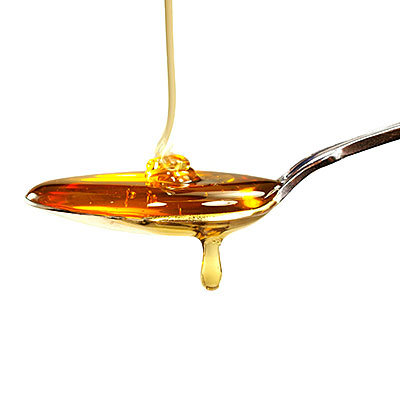
Buy unsweetened
One way to out-sneak added sugar: Buy plain versions of foods like oatmeal, Greek yogurt, and almond milk, and sweeten them yourself. This way, you can control the amount and type of sweetener you use. Try honey, agave, or maple syrup.
48 of 51
49 of 51
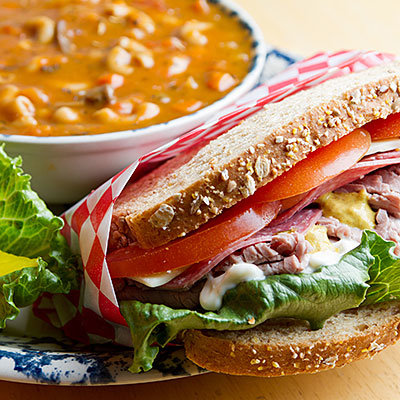
Get a soup and sandwich combo
Soup and a sandwich can certainly make for a healthy lunch—just make sure you eat all your soup before noshing on the sandwich. A study published in Appetite found people who ate a serving of soup before the rest of their meal ended up cutting their calorie intake by 20%. While the study didn't specify the type of soup, it's best to skip those creamy chowders and stick with broth-based, veggie-filled soups.
49 of 51
50 of 51
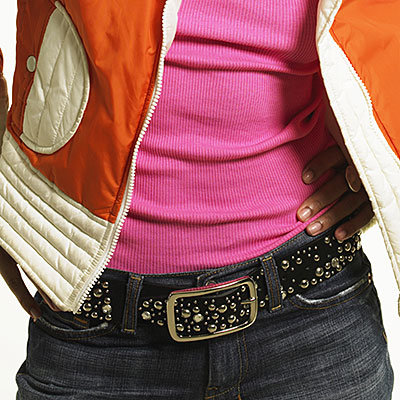
Wear a belt
Save the yoga pants for the gym, and wear belted pants to the table instead. Form-fitting clothes serve as a prompt to slow down your eating and assess how full you are during a meal. As your clothes start to feel snug, it will make you think twice before going back for seconds.
50 of 51




